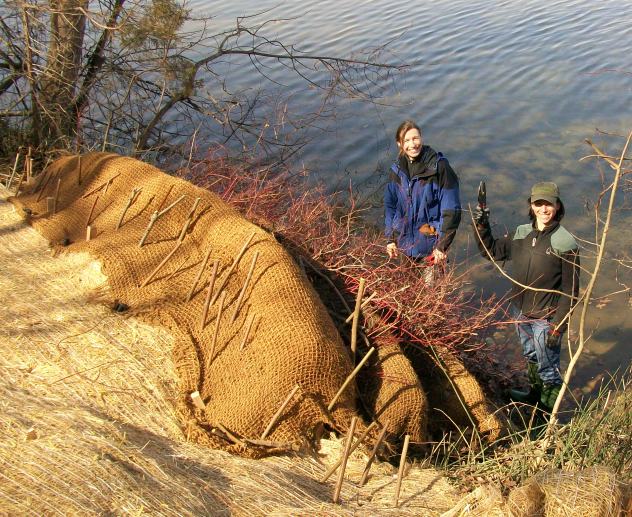
Do you live by a lake or river and see your property being eroded away but don’t know what to do about it? Efforts are under way at several locations in the watershed to promote the use of native plants and materials to stabilize the shoreline and prevent erosion from wind, waves, or high flows.
Projects have been designed to demonstrate native restoration techniques and educate lake and stream shore owners and contractors about designing and installing projects that work for them. Natural shorelines are better than hardened shorelines, which typically use metal seawalls or large rocks, because they absorb wave energy and provide habitat for native plants and aquatic animals, while reducing erosion from wave action or stormwater runoff.
Member governments with the Livingston Watershed Advisory Groups sponsored a project to demonstrate several shoreline protection techniques at Bishop Lake. A workshop was held in August 2009 and attendees volunteered to complete the initial project installation. A handful of hardy volunteers returned in March to complete a project on a steep slope. The group is planning another workshop this Fall.
The Middle Huron Stormwater Advisory Group is working with the Michigan Natural Shoreline Partnership to install a project along the Ford Lake shoreline on May 3. The installation is part of a contractor training course conducted by the Partnership. Contact Ric Lawson if you are interested in observing the installation.
Once these projects are finished, they will provide examples for others to follow. Watch our blog for future information about how to participate in upcoming workshops or to visit the demonstration sites.



